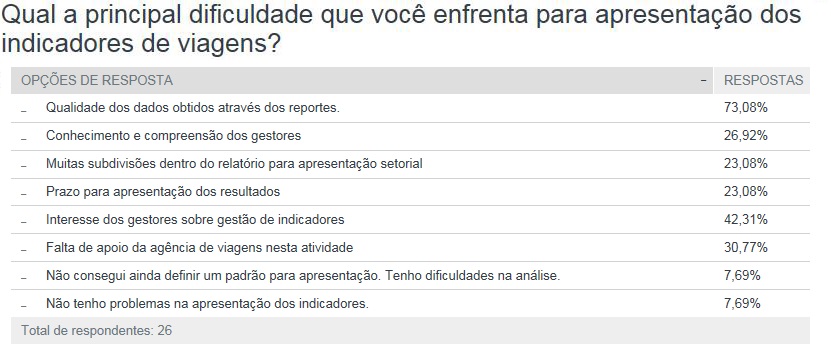Caros Leitores,
Há alguns dias, escrevi o texto abaixo para integrar o Anuário de Distribuição do Panrotas para 2018, atendendo a um (honroso) convite do editor-chefe Artur Andrade – que me pediu para falar sobre distribuição em 2018 sob a ótica de um gestor/comprador, e a este texto dedico o espaço principal de hoje.
Aproveitando o ensejo do assunto (distribuição), outro dia ouvi de um representante hoteleiro que algumas pessoas que exercem cargos como clientes finais, parceiros ou intermediários (TMCs) têm certa resistência a eles, por não serem funcionários diretos das redes/propriedades de que falam em nome. Em pleno século XXI, em pleno 2017 (quase 2018) ainda existe isso. Claro que os representantes devem ser profissionais, objetivos e produtivos, mas tratar mal um fornecedor, ou um representante seu, é inaceitável! Ter um mercado maduro e profissional começa com a forma como as pessoas se tratam.
Da mesma forma, quando nós compradores/gestores executamos um BID (mais popularmente chamado de RFP) é nossa obrigação dar uma satisfação aos participantes desclassificados. No mínimo um e-mail, e de preferência, uma conversa por telefone, reunião presencial ou mesmo um email detalhado. Dar um feedback construtivo então, é um sonho para qualquer fornecedor sério. E eles sentem falta disso, colegas… vamos praticar!
P.S: se até o Super-Homem precisa parar para um shot, imagine nós na fase de RFP de Hotéis e com o cenário de distribuição em 2018!
Tendências de distribuição em 2018 sob a ótica de um gestor/comprador de viagens
Caros leitores,
É uma honra poder escrever neste espaço tão nobre representando o principal lado da mesa: os clientes finais, as corporações de onde saem os recursos financeiros que sustentam este setor da economia. Sem nossas empresas, não existiria este trade, este mercado. E finalmente estamos ganhando nosso merecido e necessário espaço de manifestação e relevância.
É fato que a implantação de ferramentas de distribuição de conteúdo para os usuários finais (viajantes e secretárias), já é um ex-tabu, um assunto resolvido em termos de implantação e utilidade em um programa de viagens. No entanto, ao falarmos de navegabilidade, estabilidade e confiabilidade, estamos longe do cenário ideal – tanto no aéreo, quanto em hotel e locação de veículos.
Nossas ferramentas, quando estão no ar, atendem bem o básico: reservar, pedir aprovação e emitir. Mas não esperemos pop-ups diferenciados, fotos, avaliações de hotéis, de locadoras e seus veículos, remarcações, ou seja, nenhum serviço especial e/ou já disponível nas OTAs (justiça seja feita, sites que não têm fluxo de aprovação nem conexão com os GDSs, dois fatores que complicam bastante a vida dos desenvolvedores de OBTs, tirando-lhes tempo e dinheiro para manter essa estrutura funcionando ao invés de poder aprimorar experiências). Quanto à trazer as tarifas do Aéreo já sob a feição do New Distribution Capability (NDC) da IATA, então, nem pensar para antes de 2019!
Uma segunda frente de tendência de distribuição será a execução de reservas via aplicativos móveis destas mesmas ferramentas. No entanto, para se ter uma ideia, existe uma ferramenta no mercado que não consegue distribuir em seu aplicativo companhias aéreas fora do GDS – em pleno 2017! E é disso que nossos viajantes precisam, estar em movimento e reservando, aprovando e solicitando reembolsos em seus celulares – isso é distribuir conteúdo, é com isso que os fornecedores finais deveriam estar preocupados e ajudando seus distribuidores e intermediários (TMCs) a se aprimorarem. Creio que deveriam gastar um pouco menos com programas preferenciais e eventos de relacionamento, e utilizar estes recursos poupados em uma melhor distribuição e visualização de seus produtos na prateleira do consumidor final mais importante deles, o viajante corporativo.
Em MICE (Meetings, Incentives, Congressess and Events) inicia-se, ainda timidamente, um trabalho de captação de propriedades e fornecedores de serviços como equipamentos de audiovisual, transporte terrestre, iluminação, etc. Este tema é extremamente relevante para o aumento do número de programas de eventos gerenciados pelas companhias, hoje ainda descentralizados, sem visibilidade e integração com as áreas de Viagens.
Um trabalho sério e consistente de criação e catalogação de fornecedores de eventos e reuniões no Brasil trará um enorme avanço para todo o mercado, mas quem o fará, a que custo, e com que remuneração? Neste caso, não apenas clientes finais, como intermediários (Meeting Management Companies, produtoras de eventos, etc) se beneficiarão em saber quantas salas de eventos um hotel tem, pés-direitos, metragem, acomodação de pessoas; capilaridade de uma empresa de audiovisual; fotógrafos, floristas, credenciadores, montadores de stands, dentre tantas outras funções essenciais nesta área, cuja catalogação ainda é pobre.
Por fim, 2018 promete uma disputa interna ainda mais acirrada e interessante entre três players no setor da hotelaria para o Corporativo e externa com os GDSs, e eu particularmente incentivo muito esta concorrência saudável pois estes três players estão executando um trabalho formidável para o nosso mercado, tanto em redução de custos de distribuição, quanto em profissionalização da mão-de-obra e criação de uma base de hotéis corporativos, especialmente os independentes, muitas vezes deixados de lado por pura e simples impossibilidade de … distribuir. Omnibees, HRS e B2B Reservas, desejo que 2018 seja de vocês! Ajudem-nos a organizar melhor este inventário insano que está (ou deveria estar) disponível para nossos viajantes corporativos.
ENGLISH VERSION
Dear Readers,
A few days ago I wrote the following text to integrate the Panrotas Distribution Yearbook for 2018, following an (honorable) invitation from the editor-in-chief Artur Andrade – who asked me to talk about distribution in 2018 from the perspective of a manager / buyer, and to this text I dedicate the main space of today’s publication.
Taking advantage of the subject matter (distribution), a few days ago I heard from a hotel representative that some people who hold positions as end-customers, partners or intermediaries (TMCs) have some resistance to them because they are not direct employees of the brands / properties they speak of on behalf. In the 21st century, in the middle of 2017 (almost 2018), there is still this. Of course representatives should be professional, objective and productive, but treating badly someone that is not a direct employee, but represents the company, is unacceptable! Having a mature and professional market starts with the way people treat themselves.
Likewise, when we buyers / managers execute a BID (more popularly known as RFP) it is our obligation to give disqualified participants an explanation. At least one email, and preferably a telephone conversation, face-to-face meeting or even a detailed email. Give constructive feedback about their performance, prices and services is a dream for any serious supplier. And they miss it, colleagues … let’s practice!
Distribution trends in 2018 from the perspective of a travel manager / buyer
Dear readers,
It is an honor to be able to write in such a noble space representing the main side of the table: the end customers, the corporations from which the financial resources that support this sector of the economy come out. Without our companies, there would not be this trade, this market. And finally we are gaining our well-deserved and necessary space of manifestation and relevance.
It is a fact that the deployment of content distribution tools to end users (travelers and secretaries), is already an ex-taboo, a matter solved in terms of deployment and utility in a travel program. However, when we talk about navigability, stability and reliability, we are far from the ideal scenario – both in the air, hotel and car rental.
Our tools, when they are on the air, serve the basics well: book, ask for approval and issue a ticket. But we do not expect differentiated pop-ups, photos, hotel reviews, rental companies and their vehicles, exchanges, that is, no special service and / or already available in the OTAs (justice is done, sites that do not have approval flow or connection with the GDSs, two factors that greatly complicate the life of OBT developers, giving them time and money to keep this structure working instead of being able to hone experience). As for bringing airfares already in the shape of IATA’s New Distribution Capability (NDC), then, do not even think about it before 2019!
A second front of distribution trend will be the execution of reservations via mobile applications of these same tools. However, to get an idea, there is a tool in the market that can not distribute in its app airlines outside the GDS – in the middle of 2017! And that’s what our travelers need, to be on the move and to book, approve and request reimbursements on their cell phones – that is to distribute content, which is why final providers should be concerned and helping their distributors and intermediaries (TMCs) to improve. I believe they should spend a little less on preferential programs and relationship events, and use these resources spared in better distribution and viewing of their products on the most important consumer shelf of them, the corporate traveler.
In MICE (Meetings, Incentives, Congresses and Events) a timid work begins to capture properties and providers of services such as audiovisual equipment, ground transportation, lighting, etc. This topic is extremely relevant for the increase in the number of event programs managed by the companies, which are still decentralized, without visibility and integration with the Travel areas.
A serious and consistent job of creating and cataloging event and meeting suppliers in Brazil will bring a huge breakthrough for the entire market, but who will do it, at what cost, and with what ROI? In this case, not only end-users such as Intermediaries (Meeting Management Companies, event producers, etc.) will benefit from knowing how many event rooms a hotel has, feet-rights, footage, accommodation of people; capillarity of an audiovisual company; photographers, florists, accreditors, stand builders, among many other essential functions in this area, whose cataloging is still poor – the entire market will.
Finally, 2018 promises an even more intense and interesting internal dispute between three players in the hospitality industry for the Corporate and external with the GDSs, and I particularly encourage this healthy competition as these three players are performing a formidable job for our market , both in the reduction of distribution costs and in the professionalization of the workforce and the creation of a base of corporate hotels, especially the independent ones, often left out by the simple impossibility of … distributing. Omnibees, HRS and B2B Reservations, I wish 2018 to be yours! Help us better organize this insane inventory that is (or should be) available to our corporate travelers.









